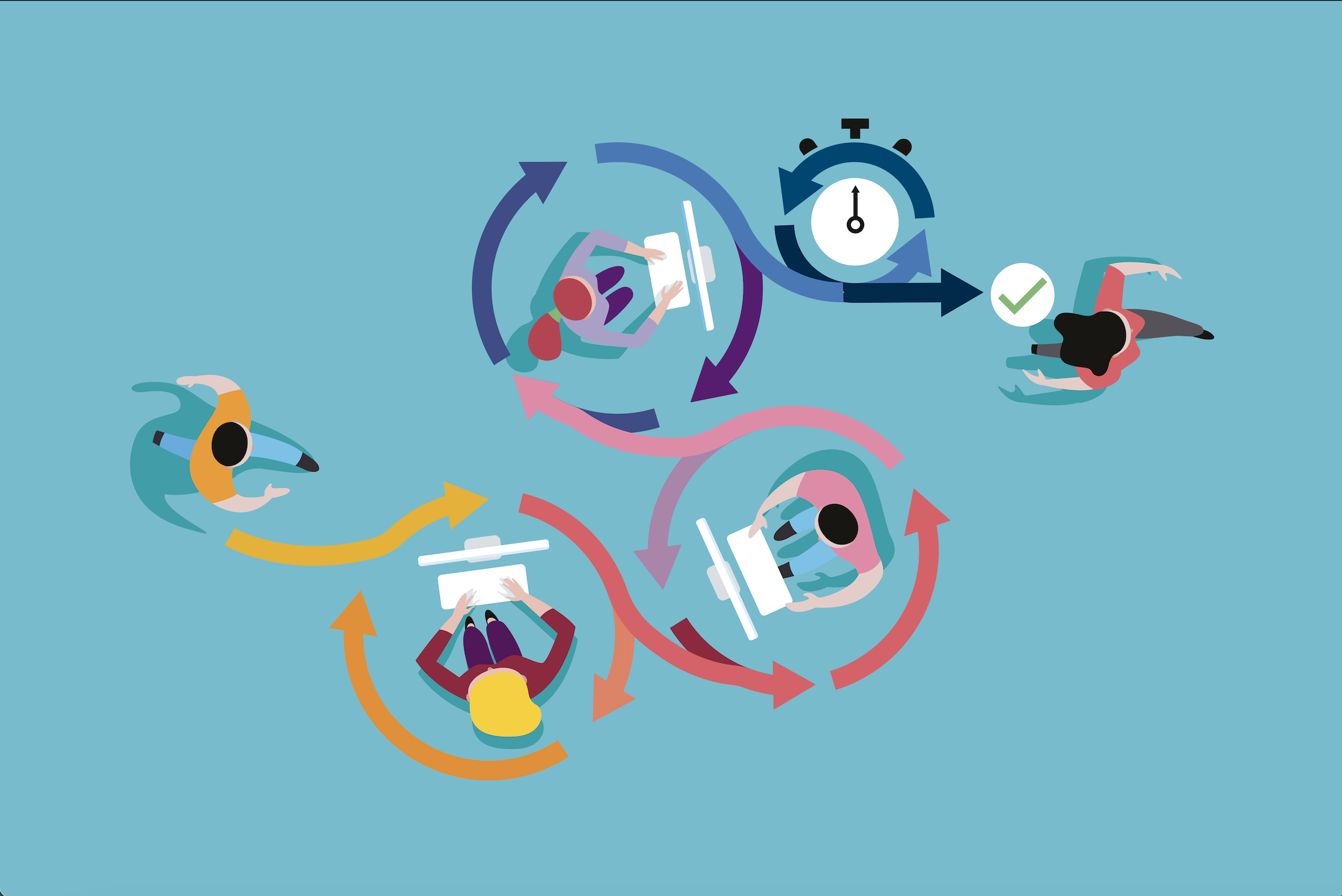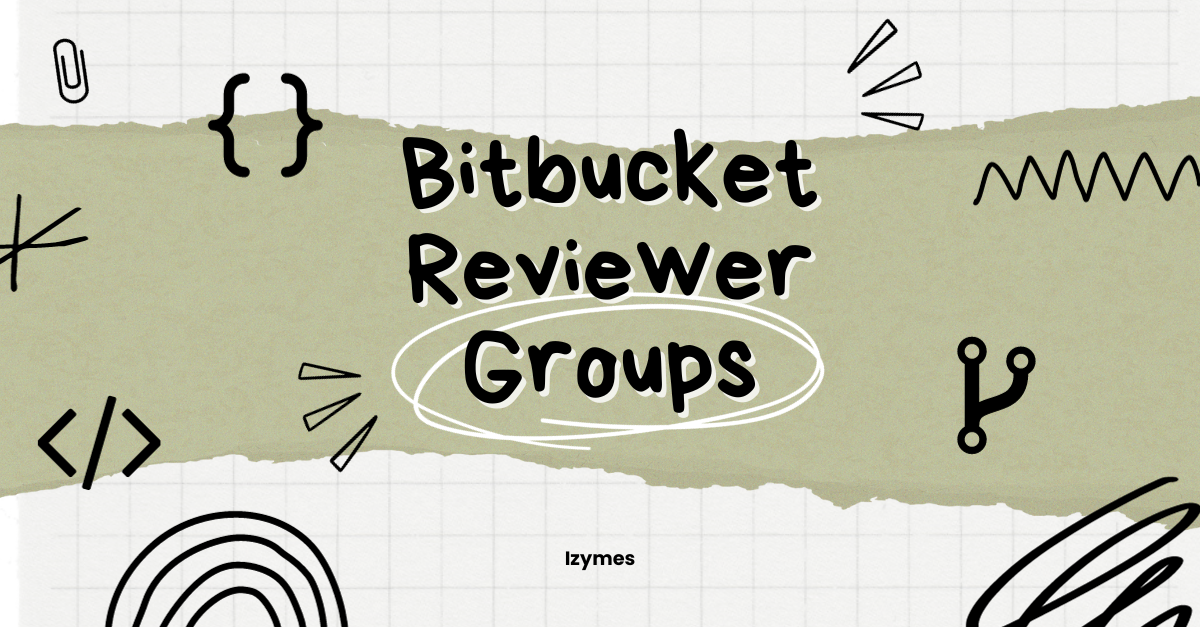Shift Left for Success: Why you should define your Pull Request Workflow early on in agile projects.
Introduction to Shift Left in Agile Software Development
As companies increase their adoption of Agile software development methodologies, there is a growing focus on “shifting left” some aspects of the development process to an earlier stage in the project lifecycle. This approach, referred to as “Shift Left”, is used to emphasize the importance of early development stages and placing a greater focus on planning before coding begins.
Shift Left has many advantages in Agile software development, as it ensures that problems are identified and addressed early in the project lifecycle. This helps to minimize the chances of costly defects at the later stages of the development process, which would require far more time and resources to fix. Additionally, this approach encourages collaboration between stakeholders from different departments throughout the entire software development process.
For the actual agile development phase of the project defining a streamlined and effective project pull request workflow process early encourages increased developer efficiency due to fewer and shorter code review cycles as well as improved code quality due to early and continuous testing.
If you want your team to produce better quality software with fewer delays or issues while embracing an Agile methodology, defining a project pull request workflow process at an early stage is critical for achieving your goals. Consider taking advantage of all of the potential benefits Shift Left has to offer!
Understanding Pull Request Workflow and Its Importance
The definition of a pull request workflow process early on in a software development project is integral to achieving success. In this process, a pull request is created, reviewed and discussed before code changes are merged into the project version control repository. Pull requests are used during collaborations and code reviews between developers, adding an extra level of quality assurance to ensure that code reviews are thorough and meet certain standards.
Using pull requests helps ensure that code changes are submitted, documented, reviewed, tested, and integrated into the software product across all development environments while facilitating traceability across all related artifacts, such as work items or test runs. Pull requests can be important for both large and small projects in software development; therefore, understanding how they work is essential.
A customised pull request workflow helps software development teams with:
- Improved collaboration amongst team members.
- An effective review pipeline which allows issues to be proactively identified and addressed prior to merging into the main repository.
- Increased visibility on the tasks undertaken by colleagues who might have different areas of expertise than oneself.
- Improved traceability back to the source.
- Increased productivity with fewer bugs after testing and a decreased tendency for conflicts that need resolving manually later on in the cycle due to proper tracking and notifications before merging.
When defining a pull request workflow early in the software development lifecycle, it is also important to ensure that all team members are aware of the associated rules and regulations related to it, such as who needs approval in terms of ownership or rights when making any kind of change; whether those changes should happen simultaneously or one-by-one; the policies regarding concurrent workflows; or any other rules unique to your project setup. This will allow for clear expectations about when changes may occur or not occur, making it easier for everyone involved across all stages of development from concept through delivery, thus ensuring the benefits of true shift left practices are embedded into daily working processes without wasting time rework due lack of proper communication early on.

Advantages of defining and automating a Pull Request Workflow Process Early
Defining and automating a pull request (PR) workflow process early in an agile software development project can provide many advantages. In particular, it allows teams to ‘shift left’, or move development towards the left on an agile project timeline. Automating the workflow makes it possible for projects to move faster without much effort from the developers as well as reducing errors along the way.
By outlining a well-defined workflow process before development begins, teams can easily define specific PR rules that foster better collaboration between team members throughout the project. This workflow will ensure that developers understand when they should open and merge new requests as well as well-defined criteria for reviewing and approving them. With pull request workflow automation in place, there will be less confusion and disagreements over who needs to review, approve and merge the PR.
Additionally, creating a pull request workflow early on gives teams time to automate their process with appropriate tools and technologies, such as GIT hooks and merge-checks, where code reviews are more easily enforced based on a set of rules. Rules will also make sure everyone is familiar with systems such as gitflow that are helpful for tracking development progress quickly by ensuring feature branches are kept up to date with main branches or other integration points prior to merging. Finally, automation makes it easy to identify potential defects early on and fix them at the start of a project instead at later stages when debugging could become lengthy if certain rules were not followed during merge or code review processes.
All these benefits ultimately help teams finish projects quicker and deliver higher quality products faster than usual with minimal effort from developers and stakeholders.


Mitigating Technical Debt with an automated Pull Request Workflow Process
Establishing an automated pull request (PR) workflow process places minimal overhead on the developers and stakeholders and removes the need to control and monitor the process. Additionally, this automated process provides a high level of technical debt mitigation by proactively enforcing code quality standards throughout all stages of development.
Maintaining high code standards is an invaluable practice for any software development project, reducing the chances of complex bugs, redundancy and poor performance down the line. These workflows operate by triggering specific code checks and pushing teams to address any issues they find while collaborating on their PRs. Additionally, as coverage grows, developers gain visibility into nuances or updates they may have missed previously – creating a continuous cycle of improvement in their projects.
When adopted in the early stages, such technical debt remediation strategies help ensure consistent quality control throughout a software development cycle’s lifecycle, even when under pressure and tight deadlines typical in agile projects.
Ensuring Quality and Test Coverage with an Automated Review process
When embarking on any software development project, it’s important to have a set of established processes and standards in place that guarantee quality assurance and test coverage.
This process should be established early on in the project timeline (or “shifted left”) to ensure that code is consistently reviewed to meet quality standards and that proper test coverage is met.
Adding reviewers automatically when pull requests are created, automated merge-checks, or additional tasks that need to be completed before merging a pull request into the main branch all help guarantee quality assurance and test coverage throughout the project’s lifecycle.
By establishing this process early on, developers can have more confidence in their product’s quality and minimize risks associated with any defect or issue caused by unintended byproducts of a large change propagation process introduced late in the project timeline.
Consistent coding and code Formatting conventions
Configuring and automatically enforcing consistent code formatting and coding conventions helps provide uniformity in the look and feel of the source code, along with reducing bugs caused due to incorrect formatting or coding logic over time. Including formatting and coding convention rules in code reviews also help developers adhere to best practices and standards, which are often defined for each organization. Project leaders can define custom rules for their pull request approval process with varying levels of complexity depending on their specific needs, allowing them to trust their automated checks with confidence.
Automated code reviews also allow developers to focus more on writing efficient code because teams know it will be validated quickly and continuously for compliance against guidelines.

Efficient Pull Request Reviews through Structured Workflow Process
Understanding and following an effective pull request review workflow can reduce friction between stakeholders and ensure that the code always meets agreed-upon standards. It helps create mutual understanding and trust across the stakeholders involved in the project, providing clarity throughout all stages of development.
Creating this type of structured workflow also helps maintain clarity within teams through good communication practices such as:
- Regular reports
- Feedback sessions
- Identifying possible solutions to issues that may arise during reviews
- Celebrating successes together as a team when issues are resolved
These steps allow for more effective collaboration so that stakeholders have access to updated information about which tasks have been completed according to agreed-upon deadlines.
Minimizing redundant Code Reviews by targeting specific file/module reviewers
As the project evolves we recommend to refine automated code review rules towards assigning specific reviewers and groups to relevant parts of the project’s code base. Reviewers are only added automatically if a part of the code base changed that is relevant to them. Other reviewers and groups are not notified. Team members are no longer distracted by a flood of pull request reviews which have no relevance to their area of expertise, thus avoiding unnecessary delays from having to look at the pull request only to find out that there are no changes they can comment on.
Furthermore, having designated contributors and reviewers based on their experience and area of expertise allows them to identify issues early and save time preventing irrelevant code reviews. Refining reviewer rules this way fosters collaboration between team members rather than detract from it.
Aligning Team Members through reviewer groups in Pull Request Workflow Process
Organizing team members into pull request reviewer groups for an agile software development project boosts team alignment and ensures compliance across various team responsibility levels.
The advantage of defining reviewer groups instead of individual reviewer users is that no updates and validations of pull request reviewer configurations need to take place when members of the organization join, leave or change their job responsibilities. As long as they are assigned to their relevant groups no further pull request process configuration updates are needed.
Team Alignment through Defined Reviewer Groups helps ensure that all relevant teams have been consulted before merging a code change. This includes the product owner, developers, testers, quality assurance, designers and any external stakeholders or reviewers.
Additionally, clearly-defined reviewer groups with at least one required approval per group provide assurance to stakeholders that tasks have been completed by enforcing at least on reviewer sign off per group on specific sections of code.

Conclusion: Early Adoption of Pull Request Workflow Process automation in Agile Software Development
Early adoption of a project pull request workflow process in an agile software development project provides many benefits. It allows teams to work faster, collaborate more effectively, and benefit from automated processes for streamlining code reviews. It enables quicker turnaround times on mission-critical project tasks and allows teams to be more agile in responding to changing priorities and requirements. The shift left also encourages better testing practices, resulting in fewer buggy releases.
At the same time, there are associated costs with the early adoption of a pull request workflow process, which must be weighed carefully against the potential benefits in order to ensure that projects deliver the highest ROI possible. Companies must also assess their existing infrastructure and training needs against the requirements of the implemented automation before moving ahead with any such process change.
Software teams and companies who understand these costs can reap great rewards by implementing automation into their agile software development processes early on. Not only will this create greater efficiency for their agile software development environment as a whole, but it will also promote greater collaboration across teams, as well as allowing them to take advantage of improved customer feedback loops enabled by newer tools such as Jira or Trello boards. With these advantages in mind, it’s clear that early adoption of pull requests workflow process automation is key for successful agile software development projects.
In conclusion, establishing defined processes with structured workflow from the outset helps keep projects on track by ensuring collaboration among stakeholders is efficient and effective throughout all stages of software development. Ensuring everyone is well informed will encourage productivity while avoiding costly mistakes from missed deadlines or variations between expected results due to poor communication. Establishing these processes early (shift left) will enable effective pull request reviews for successful agile software development projects!
Happy coding!
Kickstart your pull request workflow with Workzone for Bitbucket
Sean – Izymes – Tools for Efficient Teams – Visit our Marketplace Apps








